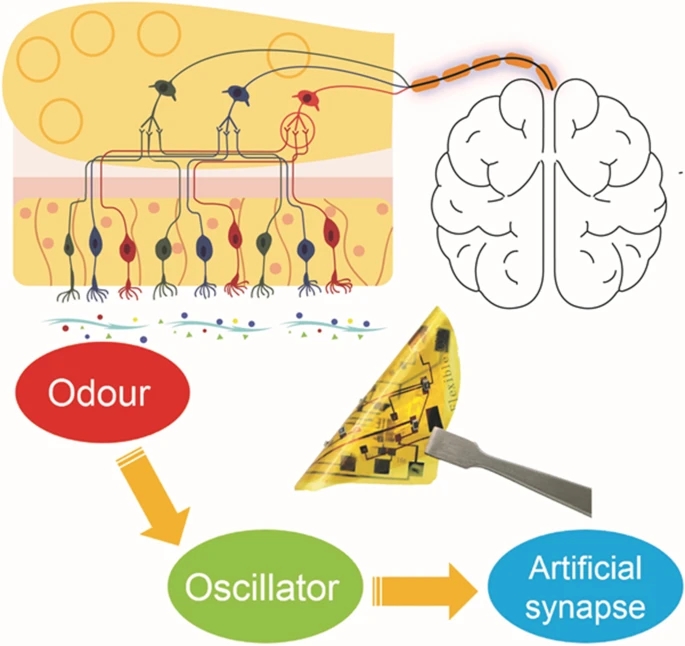文章专利

- 地址: 江苏省苏州市苏州工业园区若水路398号
- 邮箱: tzhang2009@sinano.ac.cn
- 电话: 86-512-62872706
- 传真: 0512-62603079
- 网址: http://nanosensor.sinano.ac.cn

A Hybrid Flexible Gas Sensory System with Perceptual Learning, Nano Research, 2022, 15: 423-428.
Qifeng Lu; Fuqin Sun; Yanbing Dai; Yingyi Wang; Lin Liu; Zihao Wang; Shuqi Wang; Ting Zhang*;
Abstract:
Imbuing artificial sensory system with intelligence of the biological counterpart is limited by challenges in emulating perceptual learning ability at the device level. In biological systems, stimuli from the surrounding environment are detected, transmitted, and processed by receptor, afferent nerve, and brain, respectively. This process allows the living creatures to identify the potential hazards and improve their adaptability in various environments. Here, inspired by the biological olfaction system, a gas sensory system with perceptual learning is developed. As a proof-of-concept, H2S gas with various concentrations is used as the stimulation and the stimuli will be converted to pulse-like physiological signals in the designed system, which consists of a gas sensor, a flexible oscillator, and a memristor-type artificial synapse. Furthermore, the learning ability is implemented using a supervised learning method based on k-nearest neighbors (KNN) algorithm. The recognition accuracy can be enhanced by repeating training, illustrating a great potential to be used as the neuromorphic sensory system with a learning ability for the applications in robotics.

